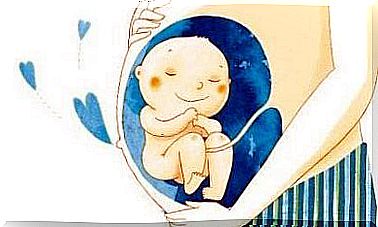5 Medical Reasons To Induce Childbirth

Inducing childbirth is a delicate process that consists of an effort that initiates the baby’s birth artificially. In other words, when the work is induced, the idea is to start the process without waiting for it to occur naturally.
In most cases, it is induced for medical reasons. But sometimes it is a personal choice or an emergency. In recent years, elective induction has become popular, with parents planning the birth at the most appropriate time.
Some parents need to take into account their work schedule or simply because they want to determine the date of birth and therefore induce childbirth.
Despite the current trend of inducing childbirth for personal reasons, doctors do not recommend it. The American Congress of Obstetricians and Gynecologists says that inducing childbirth should be an exclusively medical decision.
This means that they only recommend it in cases where the fetus’ life is in danger if it stays longer in the uterus.
What do doctors take into account when they want to induce childbirth?

All pregnancies are different, and therefore it is difficult to predict a specific result. Even if the pregnancy goes well, it does not mean that you will not undergo an induction if it is necessary.
However, there are some strong reasons that stand out in these cases. Doctors are considering inducing childbirth in situations such as the following:
- If the mother has certain health complications: For example, if she has been diagnosed with frequent bleeding, preeclampsia, heart disease, hypertension or gestational diabetes. In this case, the mentioned conditions must also endanger the child’s health. It is generally recognized that these conditions tend to be manageable in most cases.
- It is advisable to induce labor when it is clear that the baby is not getting enough oxygen. This intervention is also necessary if it is found that there is a risk of not getting enough nutrients.
- If, after her water has gone, the mother has not started labor after a period of 24 to 48 hours.
- The supply of nutrients to the fetus is jeopardized due to a pregnancy lasting longer than 42 weeks.
- When the patient is diagnosed with chorioamnionitis, which is an infection of the uterus.
How to induce pain?
There are several well-proven medical procedures to induce pain. This can be done by mechanical intervention or with medication. Here are some of them and the risks involved:
Medical induction
The main active substances used to induce are prostaglandin and oxytocin, with synthetic hormones. The former is inserted into the vagina in the form of a cream or gel. It is taken in the evening so that the uterus begins with the contractions the following morning.
Oxytocin, on the other hand, is given intravenously in the form of pytocin and syntocinone. This hormone causes the mother to have contractions.
This method accelerates the process if it has not started on its own, but the risks with its application are that it can speed up the labor too much. As a result, the mother often experiences a lot of pain and can not control the strength of the contractions.
Holes are made in the placenta

The amniotic membranes naturally rupture to start childbirth. However, the care team can do this artificially so that the body begins to produce prostaglandins. The increase in this hormone increases the contractions that lead to childbirth. This procedure is called membrane wrapping.
To perform this procedure, the doctor uses a plastic hook to scrape the membrane. This causes the baby to move to a position with the head down, which will generate contractions. The mother will feel the same as if her water had flowed naturally.
This procedure has several advantages, for example it is fast and it makes it possible to examine the amniotic fluid immediately. However, it also entails risks, such as the child not turning to the correct position after the membrane has broken.
It can also have complications that cause the umbilical cord to get stuck or damaged.
There is also a higher risk of infection that occurs due to the long time between the membrane wrap and the upcoming birth.
Natural stimulation
There is a technique that is usually effective in causing pain and is completely natural. Doctors recommend stimulating the mother’s nipples, either manually or with a breast pump.
This stimulation triggers the production of the hormone oxytocin, which, as above, causes the contractions to begin.









